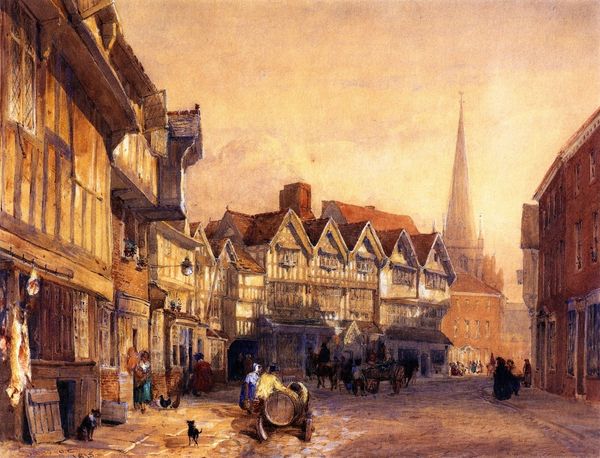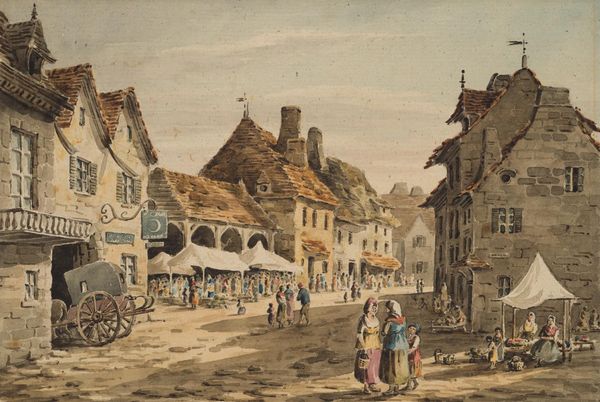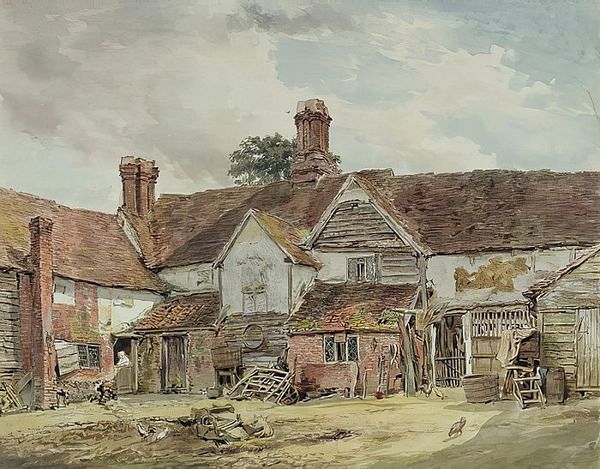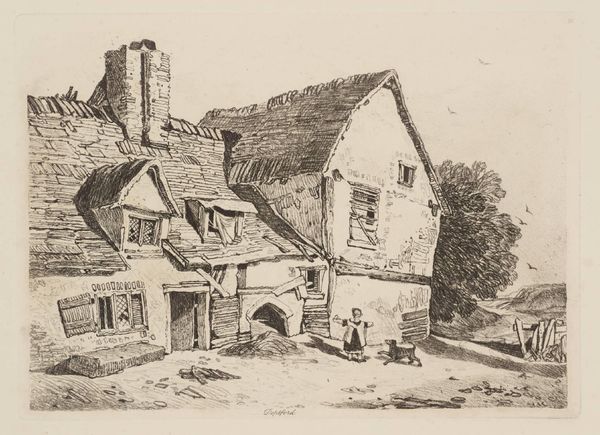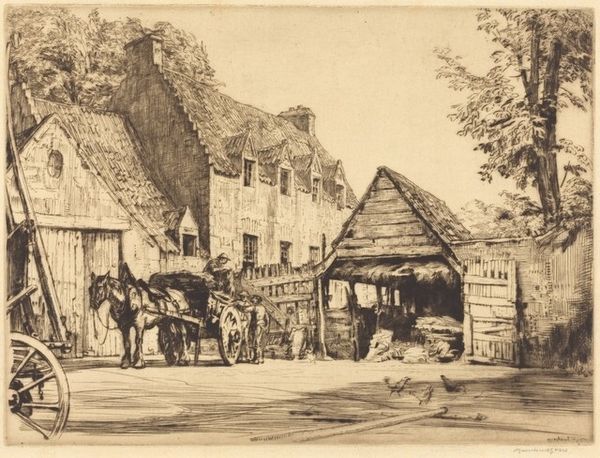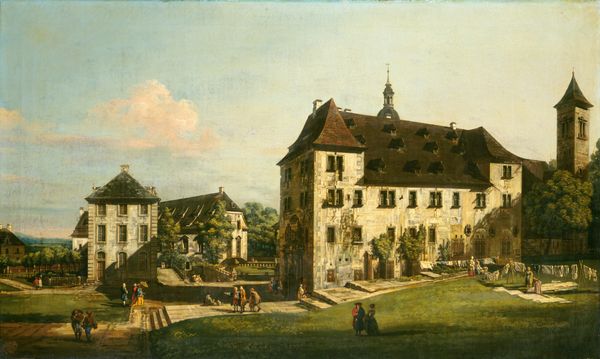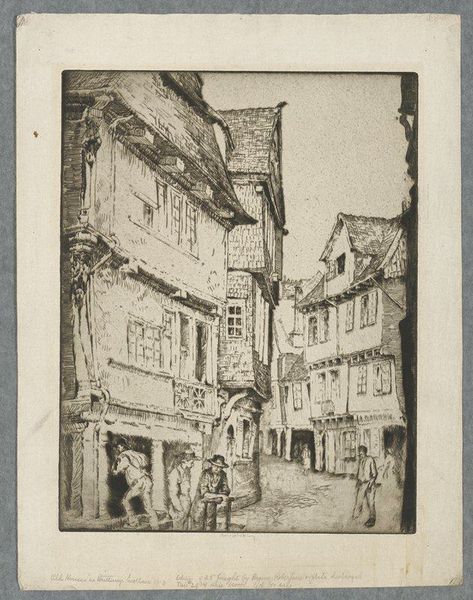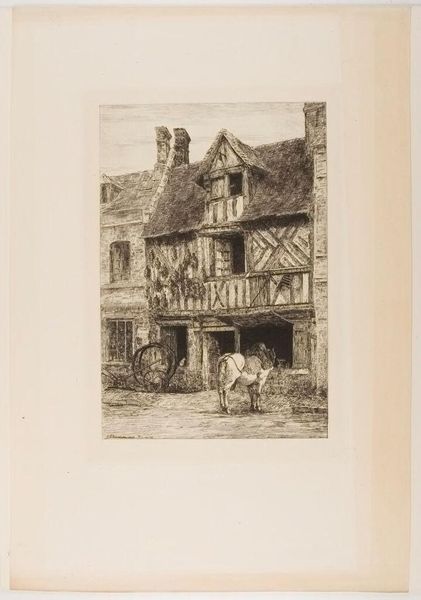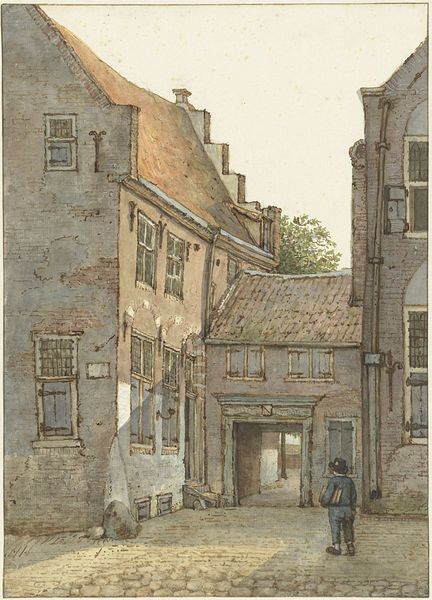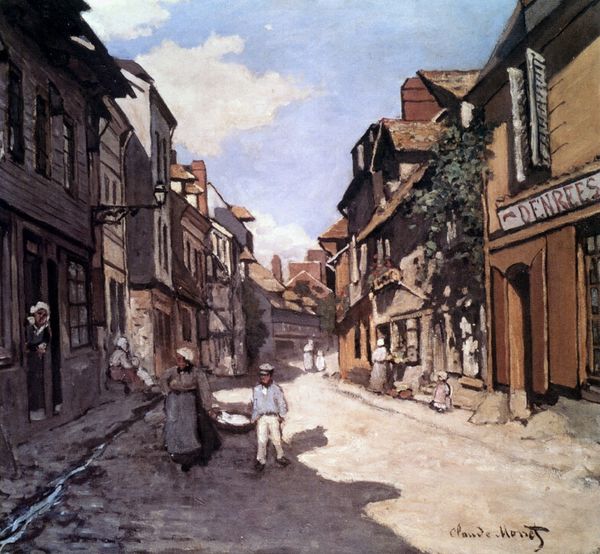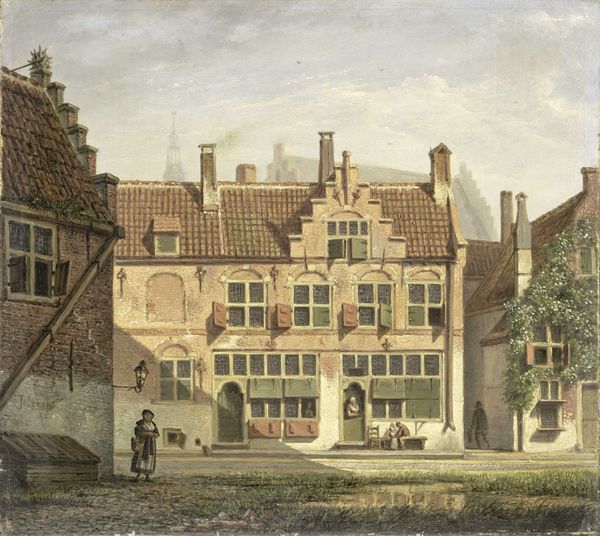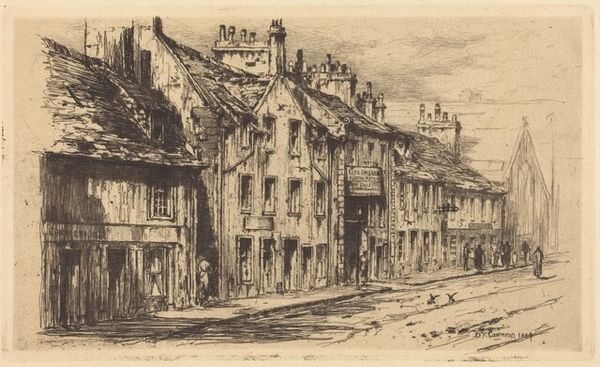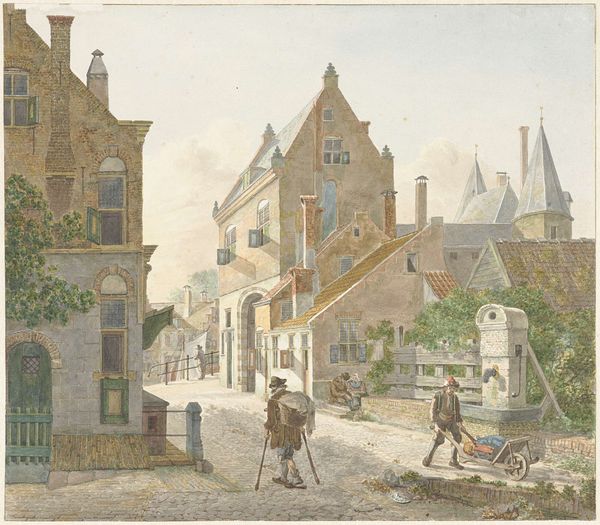
painting, plein-air, oil-paint, architecture
#
painting
#
plein-air
#
oil-paint
#
landscape
#
oil painting
#
romanticism
#
cityscape
#
genre-painting
#
architecture
#
realism
Dimensions: 29 x 38 cm
Copyright: Public domain
Curator: Here we have Theodore Rousseau's "Market in Normandy," painted in 1848, now residing in the Hermitage Museum. Editor: It’s immediately evocative of the everyday. The texture is so palpable; you can practically feel the rough stone and wood. What strikes me is how materiality signifies this as a space of labor, exchange and commerce. Curator: Absolutely, the built environment almost dominates. But for me, it’s the details in the architecture, like the half-timbered structure, that speaks volumes about regional identity. The market signifies this as an age-old hub for cultural and economic exchange. Think of all the stories contained in those stones, the collective experiences witnessed! Editor: Right, these forms, which, speaking as one looking at it after the Industrial Revolution are pre-industrial, constructed with techniques handed down through generations. One cannot separate that architecture from the labor involved. The architecture informs how we regard class dynamics; look at how people have been assembled into the composition and arranged in space to represent divisions within society. Curator: And it's important to recall that this was painted in 1848, a year of revolutions across Europe. While Rousseau's market scene might seem idyllic, there's a deeper symbolic weight in depicting a traditional way of life amidst sweeping social changes. Are we to understand this market, its commerce and culture, will survive into modernity? Editor: Precisely. Considering the work through the lens of production and consumption is crucial. It challenges us to consider how seemingly quaint scenes were actively shaping—or being reshaped by—larger historical and social forces. You almost anticipate modern methods that would supervene this artisanal existence and that romantic view will disappear. Curator: A world that will recede further with each technological advancement in trade and construction. It gives pause to imagine. It is beautiful yet tragic, as all that's painted is something transient, to be experienced now while there is still time to appreciate the past. Editor: Yes. The romantic idyll against the tide of the future! Examining materiality and process pulls us out of pure aesthetic contemplation. It allows us to connect the painting not only to broader socio-economic currents. Thank you. Curator: Thank you, as always, I have found something new with which to regard an object's potential with your ideas.
Comments
No comments
Be the first to comment and join the conversation on the ultimate creative platform.
